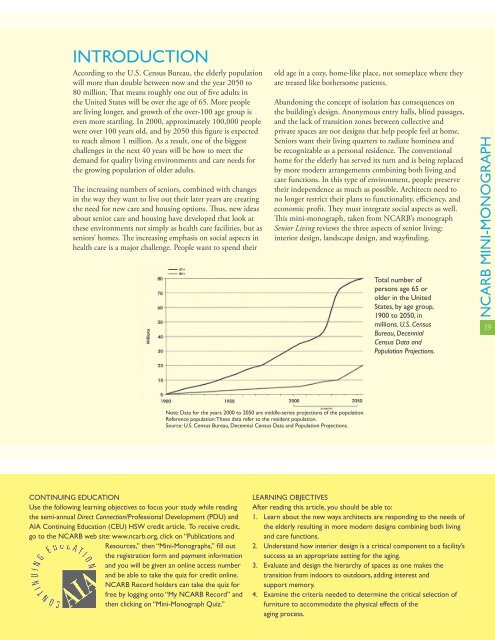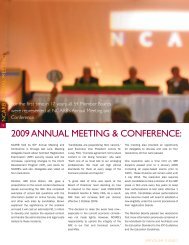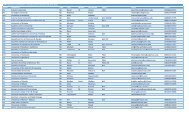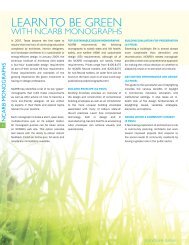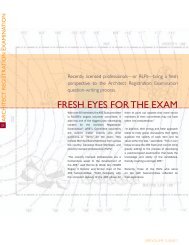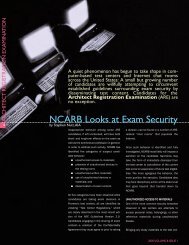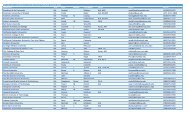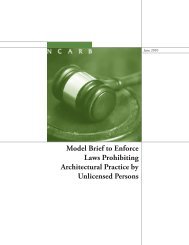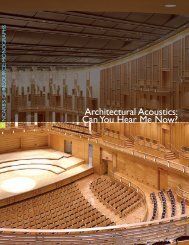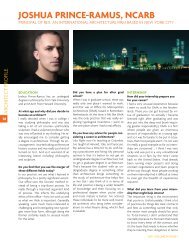FOR SENIORS - NCARB
FOR SENIORS - NCARB
FOR SENIORS - NCARB
Create successful ePaper yourself
Turn your PDF publications into a flip-book with our unique Google optimized e-Paper software.
INTRODUCTION<br />
According to the U.S. Census Bureau, the elderly population<br />
will more than double between now and the year 2050 to<br />
80 million. That means roughly one out of five adults in<br />
the United States will be over the age of 65. More people<br />
are living longer, and growth of the over-100 age group is<br />
even more startling. In 2000, approximately 100,000 people<br />
were over 100 years old, and by 2050 this figure is expected<br />
to reach almost 1 million. As a result, one of the biggest<br />
challenges in the next 40 years will be how to meet the<br />
demand for quality living environments and care needs for<br />
the growing population of older adults.<br />
The increasing numbers of seniors, combined with changes<br />
in the way they want to live out their later years are creating<br />
the need for new care and housing options. Thus, new ideas<br />
about senior care and housing have developed that look at<br />
these environments not simply as health care facilities, but as<br />
seniors’ homes. The increasing emphasis on social aspects in<br />
health care is a major challenge. People want to spend their<br />
CONTINUING EDUCATION<br />
Use the following learning objectives to focus your study while reading<br />
the semi-annual Direct Connection/Professional Development (PDU) and<br />
AIA Continuing Education (CEU) HSW credit article. To receive credit,<br />
go to the <strong>NCARB</strong> web site: www.ncarb.org, click on “Publications and<br />
Resources,” then “Mini-Monographs,” fill out<br />
the registration form and payment information<br />
and you will be given an online access number<br />
and be able to take the quiz for credit online.<br />
<strong>NCARB</strong> Record holders can take the quiz for<br />
free by logging onto “My <strong>NCARB</strong> Record” and<br />
then clicking on “Mini-Monograph Quiz.”<br />
DIRECT CONNECTION: A PUBLICATION OF <strong>NCARB</strong><br />
Note: Data for the years 2000 to 2050 are middle-series projections of the population.<br />
Reference population: These data refer to the resident population.<br />
Source: U.S. Census Bureau, Decennial Census Data and Population Projections.<br />
old age in a cozy, home-like place, not someplace where they<br />
are treated like bothersome patients.<br />
Abandoning the concept of isolation has consequences on<br />
the building’s design. Anonymous entry halls, blind passages,<br />
and the lack of transition zones between collective and<br />
private spaces are not designs that help people feel at home.<br />
Seniors want their living quarters to radiate hominess and<br />
be recognizable as a personal residence. The conventional<br />
home for the elderly has served its turn and is being replaced<br />
by more modern arrangements combining both living and<br />
care functions. In this type of environment, people preserve<br />
their independence as much as possible. Architects need to<br />
no longer restrict their plans to functionality, efficiency, and<br />
economic profit. They must integrate social aspects as well.<br />
This mini-monograph, taken from <strong>NCARB</strong>’s monograph<br />
Senior Living reviews the three aspects of senior living:<br />
interior design, landscape design, and wayfinding.<br />
Total number of<br />
persons age 65 or<br />
older in the United<br />
States, by age group,<br />
1900 to 2050, in<br />
millions. U.S. Census<br />
Bureau, Decennial<br />
Census Data and<br />
Population Projections.<br />
LEARNING OBJECTIVES<br />
After reading this article, you should be able to:<br />
1. Learn about the new ways architects are responding to the needs of<br />
the elderly resulting in more modern designs combining both living<br />
and care functions.<br />
2. Understand how interior design is a critical component to a facility’s<br />
success as an appropriate setting for the aging.<br />
3. Evaluate and design the hierarchy of spaces as one makes the<br />
transition from indoors to outdoors, adding interest and<br />
support memory.<br />
4. Examine the criteria needed to determine the critical selection of<br />
furniture to accommodate the physical effects of the<br />
aging process.<br />
<strong>NCARB</strong> MINI-MONOGRAPH<br />
39


